He may look like jolly old St. Nick with his snow white hair and flowing beard, but the character known as Belsnickle is a crotchety version of Santa Claus. Stern-looking and brandishing a switch instead of a sack full of toys, Belsnickle is like the dark side of Santa incarnate.
Belsnickle figures, coveted Christmas collectibles that grace homes during the holidays, can deliver joy to collectors year round, no matter how grumpy some of them may look. Here are 10 things to know about them:
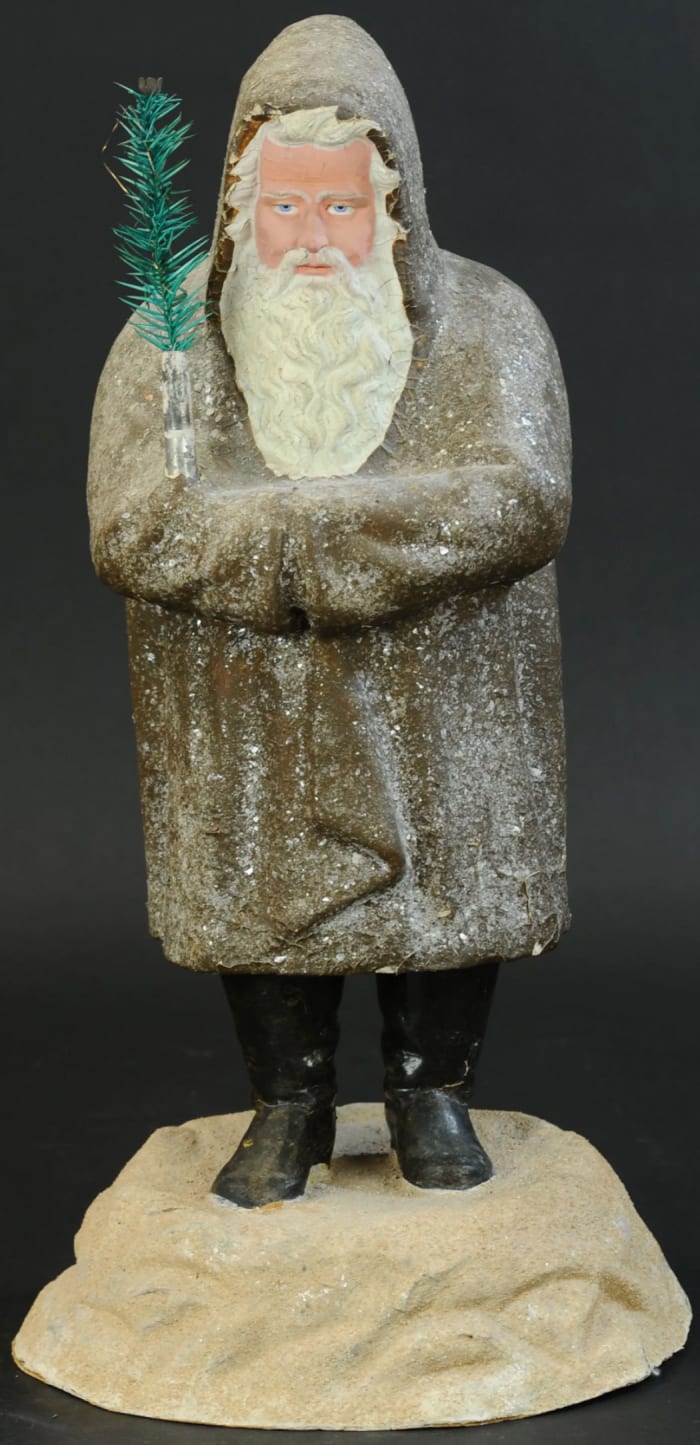
A rare and one-of-a-kind German Belsnickle with lamp fixture, circa 1870. It is standing on a snow mound, wearing a mica snow-flecked robe and has a kind but somewhat stern-looking face with blue eyes; 23″ h. This sold in November for $25,000.
Courtesy of Bertoia Auctions
1. Belsnickles originated in Germany in the 1870s
Also spelled Belsnickel, Pelznickel, and several other variants, the name is derived from “Pelz Nichol” (Nicholas in furs) and was changed to Belsnickle by German immigrants in the United States, according to Golden Glow of Christmas Past, a club for collectors who have a passion for pre-1979 Christmas antiques and collectibles. These figures were made until World War I.
2. Belsnickel was a companion of St. Nick
But according to German folklore, instead of helping to deliver toys on Christmas Eve, Belsnickle would visit households a week or two before the holiday. Dressed in fur pelts or a robe, he carried a bag of cakes and candy in one hand to reward good children and a switch in the other to punish naughty ones.
3. Belsnickles reflected the 19th century version of Santa Claus
Until 1881, that is. Although he had drawn Santa Claus years prior, it was the image German-American cartoonist Thomas Nast created in 1881 that is the now-iconic and modern image of Santa as the jolly and rotund man. The image change has a lot to do with why the mysterious, old-world Belsnickle has become such a popular Christmas collectible today.
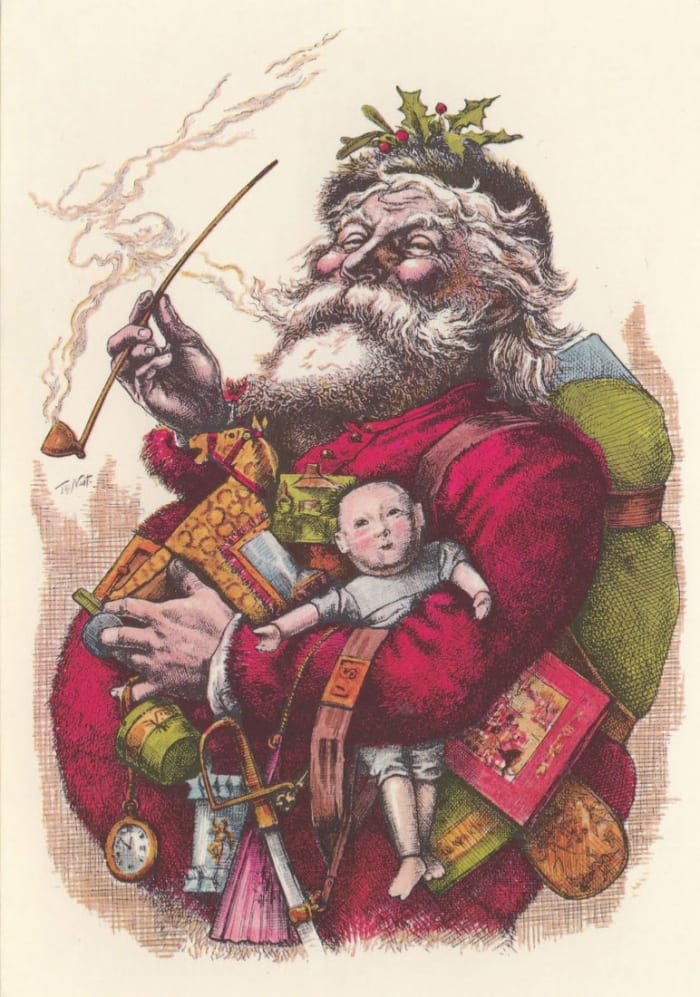
German-American cartoonist Thomas Nast created this iconic and modern image of St. Nichola the replaces the dour-faced Belsnickle.
4. Belsnickles have snowy hair and long flowing beards
They are also dressed in robes and most have a stern expression. They also usually carry a burlap sack or feather tree in the crook of an arm. While some are purely decorative, most Belsnickles double as candy containers, which are more desirable to collectors. They lift off their base, and the candy is accessed from inside the figure’s boots. Belsnickles are generally composed of papier-mâché or chalkware and sometimes even terra cotta.
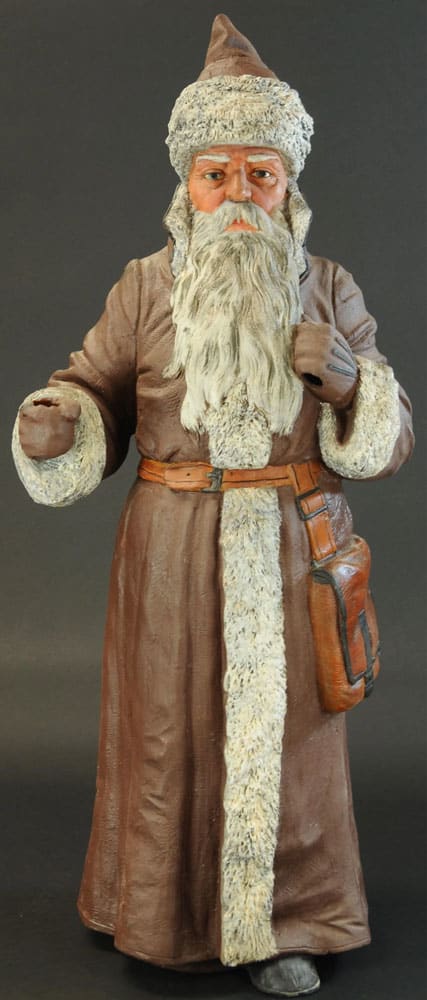
A superb and seldom seen terracotta Belsnickle figure, wearing a long red robe outlined in white that blends in with his substantial white and gray beard, his fur-trimmed cap sits atop of a well-sculpted face; 45″ h. This sold in November for $14,000.
Courtesy of Bertoia Auctions
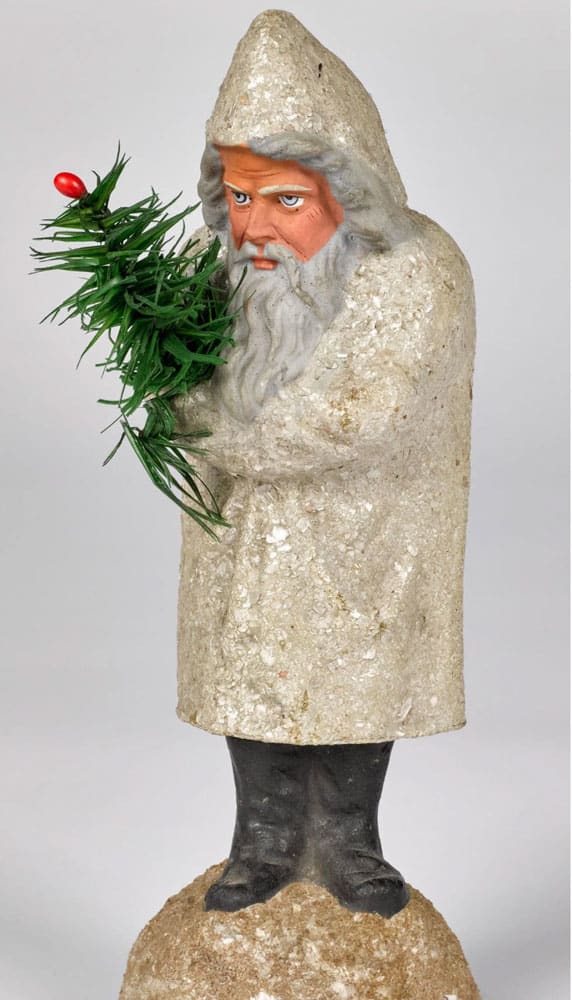
German composition Belsnickle candy container with a stern face, white mica-flaked robe and feather tree sprig in crook of arm; 10″ h. This sold for $1,900 in 2020.
Courtesy of Pook & Pook Inc. with Noel Barrett
5. Belsnickles come in various sizes
Ranging from a few inches tall to large examples that are around two feet tall, the larger ones were typically made for affluent households or for use as store window displays. The smaller forms can have a metal holder on top of the head for hanging on a tree.
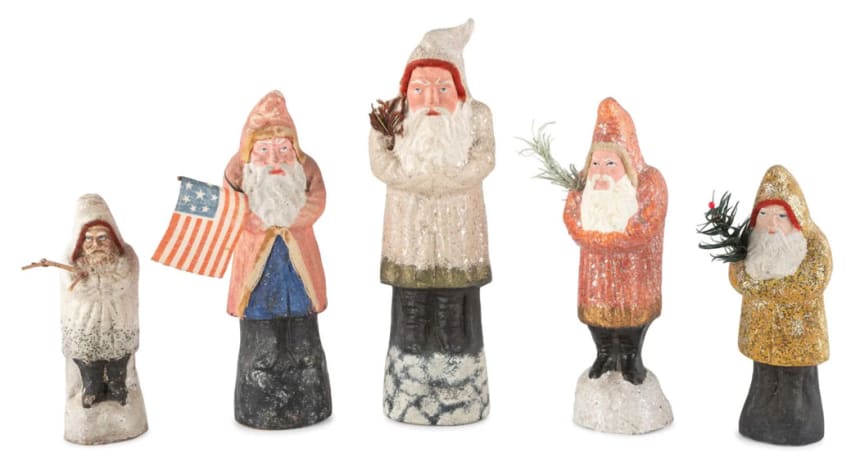
Five papier-mâché Belsnickle figures, likely German, circa 1900 and later, one holding an American flag and the tallest is 11-1/2″ h. The set sold in December for $4,750, thousands higher than the estimate of $400-$600.
Courtesy of Hindman
6. Belsnickles come in a wide range of colors
According to Bertoia Auctions, which has sold many Belsnickles over the years, red is the most common color. Robe colors also range from blues and greens to a variety of pastels, the latter being especially desirable to collectors. Purple is considered the scarcest color, according to Bertoia.
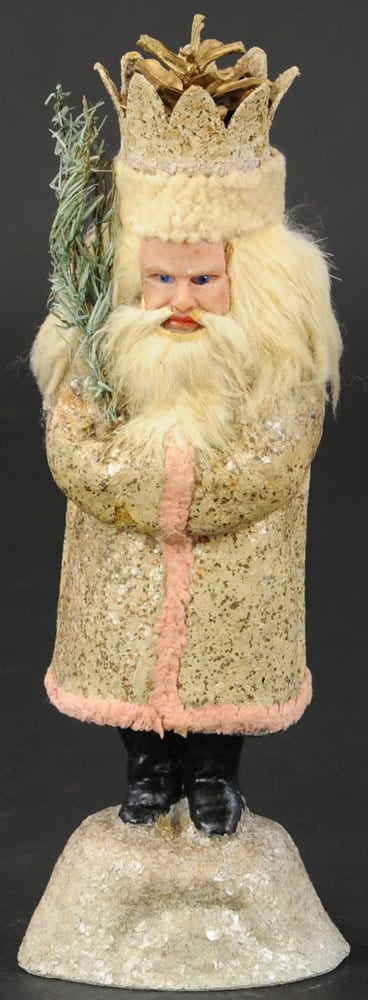
A rare and stern-looking Belsnickle with deep-set blue glass eyes and head of long mohair, and wearing a mica-flecked robe with pink trim and a distinctive pine-cone crown; 11″ h. This sold in 2020 for $4,250.
Courtesy of Bertoia Auctions
7. Collectors like unusual features
Collectors look for Belsnickles with open mouths and teeth showing, which are rare and valuable. Also rare are figures with beards made of glass icicles. Other unique touches include an ornate headpiece or real fur trim on the robes, which add to their value, or face mask. Believe it or not, some Belsnickles even have kinder expressions.
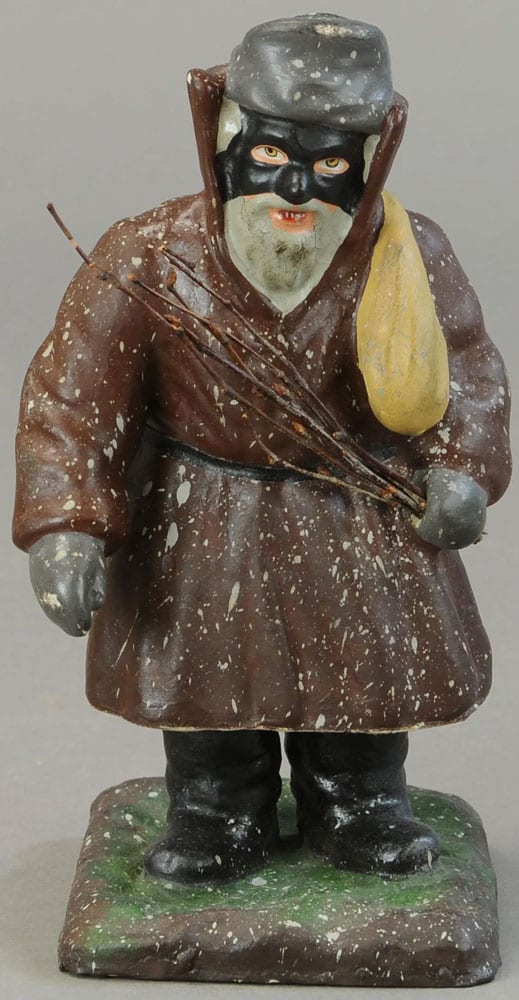
This mean-looking Belsnickle is wearing a black mask and carrying a sack of toys for good children and holding a switch to punish bad ones; 9-1/2” h. This sold for $600 in December.
Courtesy of Bertoia Auctions
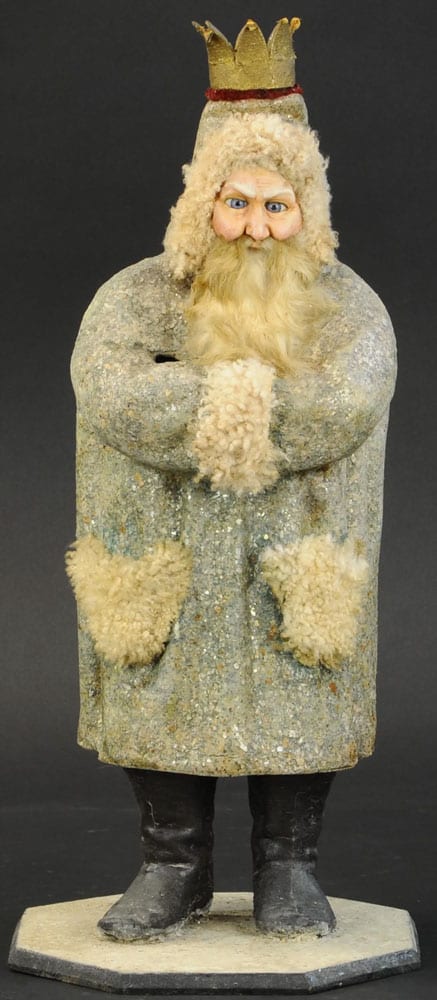
A early Belsnickle candy container made of snow-flecked composition, mohair trim, porcelain-like composition face, rabbit fur beard and piercing blue glass eyes; 20″ h. This sold for $19,000 in 2020.
Courtesy of Bertoia Auctions
8. Belsnickles may stand on a base
These bases are made in the form of a snowy mound, and since German Belsnickles were made for the American market, some were even designed to hold an American Flag.
9. Value is determined by three main factors
A piece’s size, condition and overall aesthetics, including the color of its robe, all determine its value. Painted robes are also often dusted in mica sprinkles to give the illusion of sparkling snow.
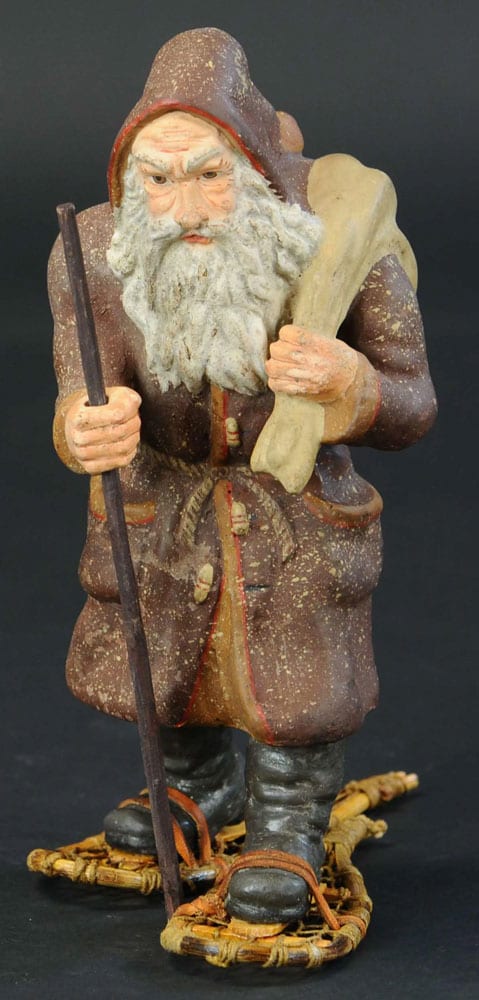
A rare and early chalk-like German Belsnickle walking with a stern and determined look on his face as he makes his Christmas Eve rounds on his snowshoes; 10” h. This sold in November for $2,250.
Courtesy of Bertoia Auctions
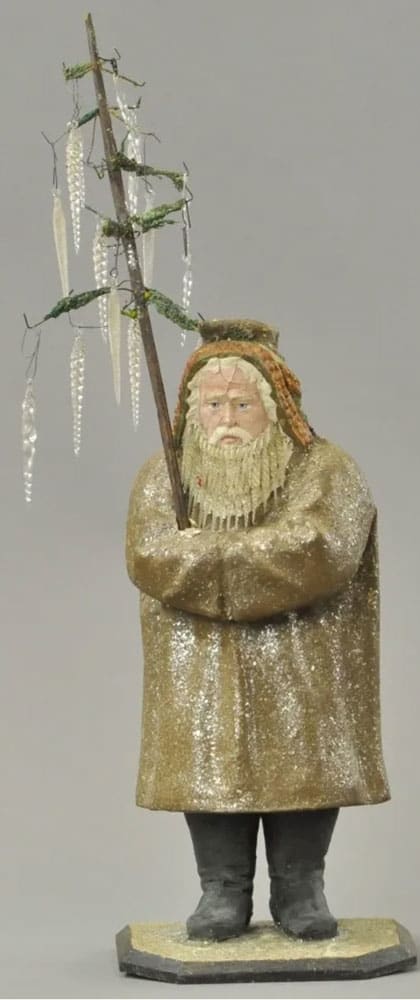
Large German Belsnickle candy container with glass beard, composition figure wearing long brown robe flecked with mica, golden beads around his hood, holding a lichen moss tree in arms and standing on mica-flecked wood base. This Belsnickle has a kind expression, rather than the usual stern one; 16″ h. This sold for $22,500 in 2016.
Courtesy of Bertoia Auctions
10. Antique Belsnickles widely vary in price
These Christmas figures vary in price on average from a few hundred dollars up to thousands. The top price on LiveAuctioneers’ results database is for a rare and one-of-a-kind Belsnickle with a lamp fixture that sold for $25,000 in November at Bertoia Auctions. Bertoia also sold the next two most-valuable Belsnickle candy containers: one with a long, mica-flecked brown robe with a hood studded with gold beads and a glass beard that brought $22,500 in November 2016; and one made of snow-flecked composition with a rabbit fur beard and piercing blue glass eyes that sold for $19,000 in 2020.









